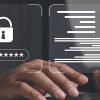NAB is celebrating the success of its payment prompts, revealing that customers have abandoned $50 million in payments after receiving these messages. The prompts are designed to notify customers if a payment appears suspicious based on their transaction history, helping them avoid scams and errors when setting up new payments. The prompts utilize real-time calls to the bank’s fraud engine when a customer enters a new payee. Chris Sheehan, the bank’s Group investigations and fraud executive, explained that while some customers ultimately complete their payment after receiving an alert, many choose to stop and check, resulting in $50 million worth of abandoned payments, averaging $220,000 per day. In addition, NAB announced the integration of debit and credit card reporting into its online channels, allowing customers to report fraud without having to make a phone call. Sheehan noted that 60% of calls to the bank’s fraud and scams team concern card fraud, making the inclusion of reporting capabilities within the bank’s trusted apps a sensible move. While phone reporting will still be an option, NAB has increased its phone team by 70 staff members to reduce wait times and improve customer service.






